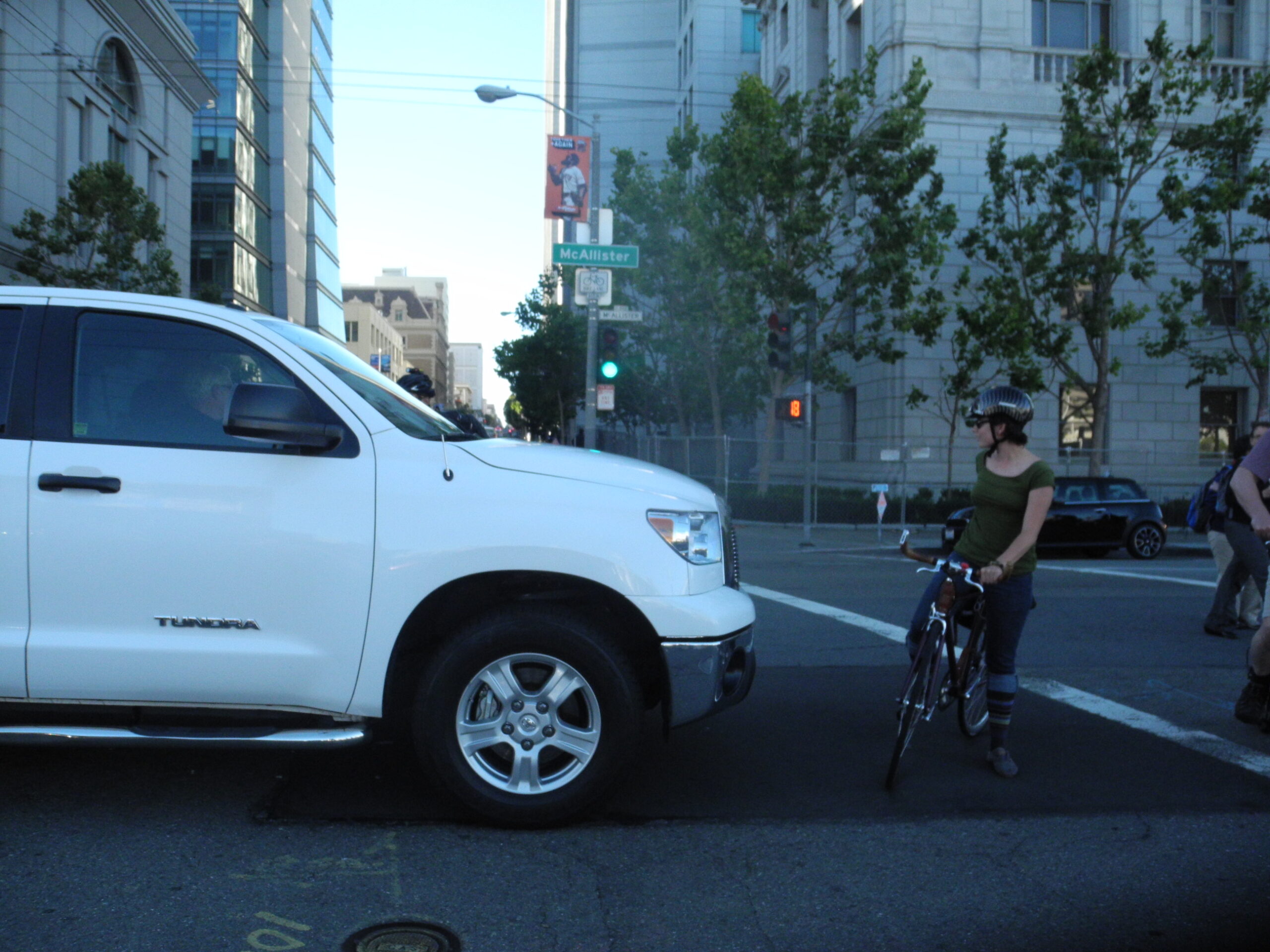Oversized vehicles are making U.S. streets deadlier for pedestrians and bike riders. New federal regulations could save lives–but the proposed changes still let automakers off the hook.

(Image: Dianne Yee/Flickr)
There is a crisis unfolding on U.S. streets: pedestrian deaths are at a 40-year high, with over 7,000 pedestrians killed by by drivers each year. Put another way: every day, 20 people walk outside–to head to work, school or a doctor’s appointment–and get killed by a moving vehicle. That number has skyrocketed by more than 50% since 2009.
One of the causes of this crisis? Vehicles are getting bigger and heavier, higher off the ground, and with worse driver sightlines. But under the federal government’s safety rating system, known as the New Car Assessment Program (NCAP), almost every vehicle gets four- or five-star ratings. That’s because the system only takes into account the safety of those within cars, not outside them, resulting in thousands of preventable deaths each year.
Last year, thousands of concerned residents, safety experts, cities, and organizations–including NACTO–called on the National Highway Safety Administration to reform the program so customers have accurate information on the safety of vehicles that they purchase.
Now, NHTSA is proposing the inclusion of an optional pedestrian crash worthiness test within NCAP. While this proposal is a step in the right direction, it is unlikely to make a meaningful impact on pedestrian safety for several reasons:
- The proposed test isn’t included in the vehicle’s final safety rating; the vehicles that are most dangerous for pedestrians can still get 5-star ratings.
- The test would conducted by car manufacturers themselves, and since it’s voluntary, automakers can choose to skip it entirely. Even when automakers do conduct the test, they aren’t required to publicly share the results; this crucial information only needs to be published on an obscure website, leaving consumers in the dark.
- NHTSA continues to welcome unsafe vehicles on our roads by failing to incorporate life-saving vehicular features like ADAS and Direct Vision standards that can prevent bicyclist and pedestrian-involved crashes altogether.
By changing NCAP, NHTSA has the opportunity to save lives and make streets safer for everyone. But the proposed changes still let automakers off the hook for designing dangerous vehicles.
That’s why NACTO is calling on NHTSA to strengthen this proposal by taking the following steps:
- Require that any vehicle that receives a failing grade for pedestrian crashworthiness be ineligible for an overall 5-star vehicle safety rating.
- Adopt a 5-star scoring system for pedestrian crashworthiness, rather than a pass/fail system.
- Compare vehicles across weights and classes to reflect the risks of vehicle height and weight.
- Have NHTSA conduct the crashworthiness test, rather than allowing manufacturers to conduct the test and self-report results.
- Incorporate the results of the pedestrian crashworthiness test on the Monroney Label.
- Accounting for a broader range of road users–like bike riders–and higher-speed crash scenarios.
- Incorporate information about other safety features–like ADAS and direct vision–and ensure no vehicle receives a 5-star rating if it doesn’t include those features.
Read NACTO’s full list of recommendations (pdf) for more detailed information.
The proposals are open for public comment until July 25th, and your feedback can help ensure NHTSA’s new rules are best designed to keep our streets safe. Submit your comments to the federal register using our template.
Many cities and transit agencies have also joined our call to make vehicles safer for everyone. You can read some of their statements on our Vehicle Design page.